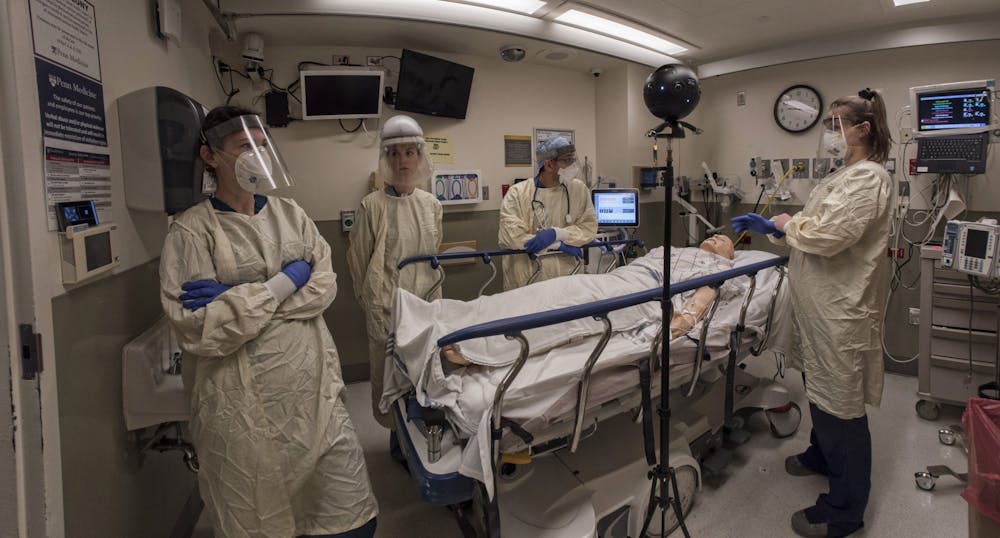A digital design specialist at the Annenberg School for Communication created a 360-degree virtual reality video demonstrating COVID-19 treatment practices in order to prepare medical staff in remote locations to respond to a possible spike in cases.
Virtual reality is an immersive technology that benefits medical personnel by generating a 3D, interactive environment in settings that are often hard to simulate with 2D graphics, according to the video, which was filmed in the Emergency Department at the Hospital of the University of Pennsylvania.
Through operation on a mannequin, the video depicts a doctor treating a COVID-19 patient suffering from respiratory failure.
Although the video is available to everyone, it was made specifically for healthcare providers who have been exposed to high levels of critically ill COVID-19 patients. Medical staff can watch the video on YouTube and Annenberg's website through a computer screen or with a virtual reality headset.
Annenberg Digital Design Specialist Kyle Cassidy, who spearheaded the project, first created a virtual reality video in 2018 to teach people how to use Narcan, an anti-opioid overdose reversal agent. After Cassidy presented a paper about the video at a healthcare conference, Kevin Ching, a physician at Weill Cornell Medicine, reached out to him in mid-April asking for his help in developing an educational, virtual reality video to highlight coronavirus treatment practices.
HUP Assistant professor of Emergency Medicine Lauren Conlon, who serves as the video's principal actor as an attending physician, said the project focuses on demonstrating critical care resuscitation of a COVID-19 patient with respiratory distress.
Conlon worked closely with Ching, and assistant professors of clinical emergency medicine at Weill Neel Naik and Amos Shemesh to draft the video script and ensure the information presented was consistent and relevant.
In order to film the video, Cassidy checked out a special camera with six outward facing lenses from Penn Libraries Vitale Digital Media Lab to capture a realistic 360-degree environment of hospital settings. The virtual reality aspect of the Annenberg video allows medical staff to better prepare for the possibility of distractions in a high-pressure atmosphere as they treat a COVID-19 patient with respiratory failure, he said.
RELATED:
Penn Libraries and students aid in increasing literacy in Philadelphia elementary schools
Penn students launch online learning platforms to educate young students during COVID-19
“In a lot of medical teaching, there is an in-person aspect to it, which often requires people to look in different directions, to be able to physically touch something, to see things move, to be able to make decisions, and see how those decisions affect outcomes,” Cassidy said.
Christopher Vandegrift, a recording studio assistant for Vitale Digital Media Lab at Penn, edited a majority of the video by stitching the six lenses of the camera together, making lighting and noise adjustments, and inserting on-screen graphics. The video took approximately 20 to 40 hours to edit after receiving the unedited version the day it was filmed, he said.
“The virtual reality makes it real and immersive in a way that I think a normal video would not be able to capture," Vandegrift said.
Ann Marie Hoyt-Brennan, director of the Helene Fuld Pavilion for Innovative Learning and Simulation at Penn Nursing, previously worked with Cassidy on the Narcan virtual reality video and contributed to his new project by securing the filming location. She initially wished to film the video at Penn Nursing’s Simulation Center, but on-campus coronavirus distancing restrictions led the team to film in the Simulation at Penn space at HUP.
“We wanted to set guidelines for those in more rural areas that are struggling with some of the guidelines in place and say this is what we are doing. And this is how we are managing a COVID-19 respiratory failure that comes into the emergency department," Hoyt-Brennan said.









